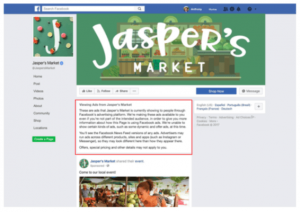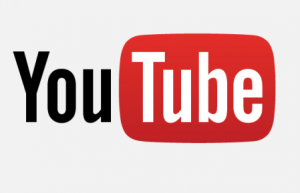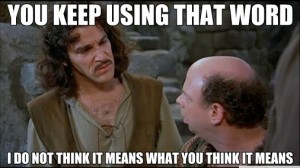
I’ve written before about the differences between traditional media and social media — which are profound. You might enjoy reading about the 16 differences between traditional media and social media or this one on social media versus traditional media. There’s even a good infographic on the 10 differences in social media versus traditional media.
And, these are great resources for firms transitioning from traditional media exclusively. Clearly articulated in these resources is the fundamental transformation of thinking required to do social media effectively and the benefits from doing social media the right way.
Examples of social media versus traditional media include:
- pull versus push communication
- many to many versus one to many
- expensive versus less expensive (not free!)
- long planning horizons versus short planning or spontaneous
- confined to marketing versus multiple stakeholders
Let’s take a look at each of these difference individually.
Social media versus traditional media
Pull versus push communication
When we talk about push marketing, we’re talking about pushing channel partners to move your merchandise under the assumption that consumers will buy it if they see it available in stores they shop. For example, when a manufacturer calls on a department store to carry their brands, that’s push marketing. Pull marketing is using advertising to pull consumers into the store to buy your brand.
But, we can extend this to talk about communication strategies — I think. So, if we talk about push communication, we’re talking about pushing your messages out to consumers in the hope they’ll act on it. Pull communication uses the power of your community to pull their friends in; making them aware of your products and adding at least tacit endorsement of your brand.
As consumers, we’ve become jaded when it comes to push communication. We know that actors are paid for their endorsements and many will say whatever the script tells them to without any belief in the product. We’ve also been lied to so many times in previous advertising, we just don’t believe much of it anymore. Plus, we’re really adept and removing ourselves from a brand’s efforts to advertise to us by joining “do not call” lists, bypassing commercials in out TV watching, and ignoring everything on the right side of the screen when surfing the web.
The whole thing changes when you talk about pull communication. When friends ask about what movie or restaurant you like, or see photos posted from a particular event or place, or when you share your terrible experiences with a brand, they believe you — you don’t have any reason to lie to them.
Another advantage of pull marketing is targeting. Likely, you share important characteristics with your friends — similar interests, similar demographics, similar values. Thus, messages transmitted (Liked, RT, Pinned) reach just the folks you want to hear your message rather than falling on millions of deaf ears.
Many to many versus one to many
 Traditional media has 1 voice (it it’s done right) and that same voice reaches out to hundreds or millions of consumers. Social media has many voices each reaching out to consumers.
Traditional media has 1 voice (it it’s done right) and that same voice reaches out to hundreds or millions of consumers. Social media has many voices each reaching out to consumers.
The amplification alone makes a case for social media versus traditional media.
Look at the reach of social media depicted at right. Let’s say you have a community of 2 million folks and each of them has friends/ followers they share with. Some of those friends/ followers share the message with their friends/ followers and the process repeats until the message is extinct after a certain number of cycles. This is the definition of viral messaging.
Sure, viral doesn’t happen with every message, but it’s much more likely with social media versus traditional media.
Expensive versus less expensive
Social media versus traditional media is just a lot less expensive.
For instance, the cost of a single 30 second commercial on this year’s Super Bowl topped $ 4 million.
That’s a heck of a lot of money.
Don’t let that fool you, however. Social media isn’t free. You’ll need:
- Trained, experienced folks to manage your social media. These folks don’t come free. And, hiring on the cheap is not a good idea when these folks will be your voice to millions of folks on social networks.Asus found this out the hard way when they entrusted their social media to a lowly, inexperienced intern. The intern crafted a post he thought was funny that insulted 50% of the population and seriously backfired on the company. Pay for good people
- Automation software. Yeah, I’m not a big fan of automating your social media, but certain tasks are just easier and more coordinated if they’re automated. Sharing posts to social networks is an example. You need a tool that helps with scheduling, resizing images, and listening/ responding (not necessarily the same tool).That said, I never let my software craft messaging — although you’ll find those tools out there. My advice, don’t waste your money and damage your reputation by trusting them.
- Monitoring. You’ll need a good tool (or several tools) to track your performance and provide insights you’ll use to optimize that performance.If you’re interested, I’ve curated a list (with the help of my community) of great tools for monitoring social media performance.
Long planning versus spontaneous
You can’t manage social media the same way you manage traditional media.
Try it and you’ll likely kill your social media efforts.
Traditional media is expensive to produce — not just transmit. A firm might spend a $ 1 million just on talent for their commercial. Plus the cost of directors, camera folks, editing, etc. They’ll produce maybe 2 or 3 commercials a year because they’re so expensive.
Because traditional media is so expensive, companies go through extensive creative and approval processes that might take weeks or months.
Social media unlike traditional media, is produced every day (or every couple of days). There simply isn’t time for long approval processes.
Increasingly, firms use a content marketing calendar to add some control to their social media processes and build in some oversight. But, things change fast, so folks handling your social media need to be able (and empowered) to respond instantly to changing conditions with appropriate responses.
For instance, Kenneth Cole posted a tweet making light of the Arab Spring uprising in Cairo and paid a heavy price in the TwitterSphere. When conditions change, you need to respond appropriately, not make fun of a serious situation or use it to your advantage, as Bing did over the earthquake in Japan.
Content is everyone’s job
In social media versus traditional media, you see a democratization of communication, with (hopefully) consistent voices across the organization rather than a single voice from the marketing department.
A good practice in social media is to hove folks with expertise share their insights on the company social platforms. An engineer might share (vetted) information about a new product or a customer support person might share answers to his/ her most frequently asked questions.
Democratization comes at a cost for organizations not prepared to handle potential problems. For instance, someone in Chrysler’s social media team dropped the F-bomb in a tweet critical of Detroit drivers and several firms battle employees accidentally publishing from the corporate accounts thinking they were sharing to their own accounts.
A content marketing calendar helps offer some control to brands without crippling their ability to respond to changing conditions.
A content marketing calendar contains content, including images, publication plans, and approval. Thus, there’s the ability of a manager to approve everything before it gets automatically produced (potentially to disastrous consequences). However, the key to making a content marketing calendar work is quick turn around on the approval process — more like a newspaper than a traditional media agency.
Editorial and design guidelines are also a critical element of your social media process. Everyone working on social media or crafting content for social media should be versed in these guidelines to ensure posts maintain a consistent branding across different authors. Remember that best-practices in social media change frequently, so your editorial and design guidelines need updating frequently.
You should encourage employees who don’t create content to follow your social networks and engage with them by liking, sharing and commenting. Engagement from employees can jump-start a community around your social networks.
Final thoughts on social media versus traditional media
It’s a whole new ball game out there.
It’s a mistake to think you can avoid all the problems and uncertainties associated with social media and simply stick to traditional media as a more secure alternative. But, your strategic decision isn’t social media versus traditional media, it’s how to best incorporate social media into your brand strategy because traditional media is losing reach and impact.
According to Business Week, prime time TV ratings fell by over 41% between 1977 and 2003, reflecting a fundamental shift in our TV viewing habits. TV viewing is more fragmented — across 100 TV channels beamed into the typical American household as opposed to only 4 in 1977 and 27 as recently as 1994. Increasingly, consumers watch TV programming on their own schedule, either online (with limited commercials) or through personal recordings. Data show consumers skip 70% of ads using a personal recording device.
At the same time, newspapers are dying off and radio succumbing to paid (advertising-free) subscriptions like Sirius. Increasing municipal regulations is squeezing out billboards as a nuisance and a safety hazard. The only bright spot in traditional media is the blossoming of magazines designed for niche markets.
More than a crisis of reach, the competition of social media versus traditional media is one of the ability to ring cash registers. Here, social media wins. Not only can social media more effectively measure its impact on a company’s bottom line, but the ability of social media to convince consumers to part with their money is superior.
Mass marketing, an integral element of traditional advertising, was one-size-fits-all. Thus, messages weren’t optimized for conversion, but aimed at a large reach (which we saw earlier is declining). Social media allows infinite customization based on specifics of an individual, such as cookies. Instead of celebrities promoting products, we now have our friends promoting them through endorsements, such as liking and sharing.
Taken to its ultimate end, social media allows (even encourages) consumers to create content around a brand, serving as brand advocates and provide assistance to those who question the product or its use.
(169)








